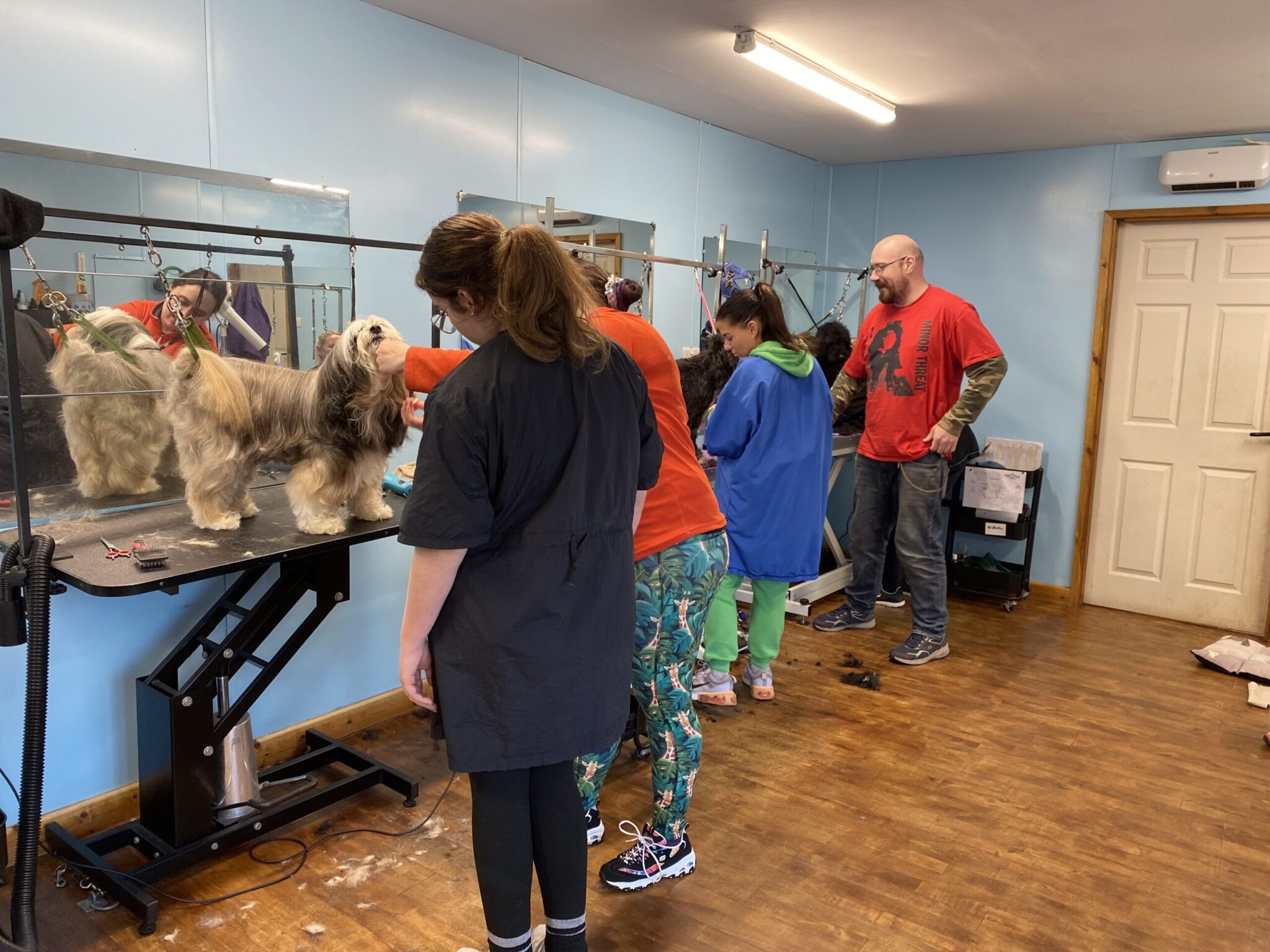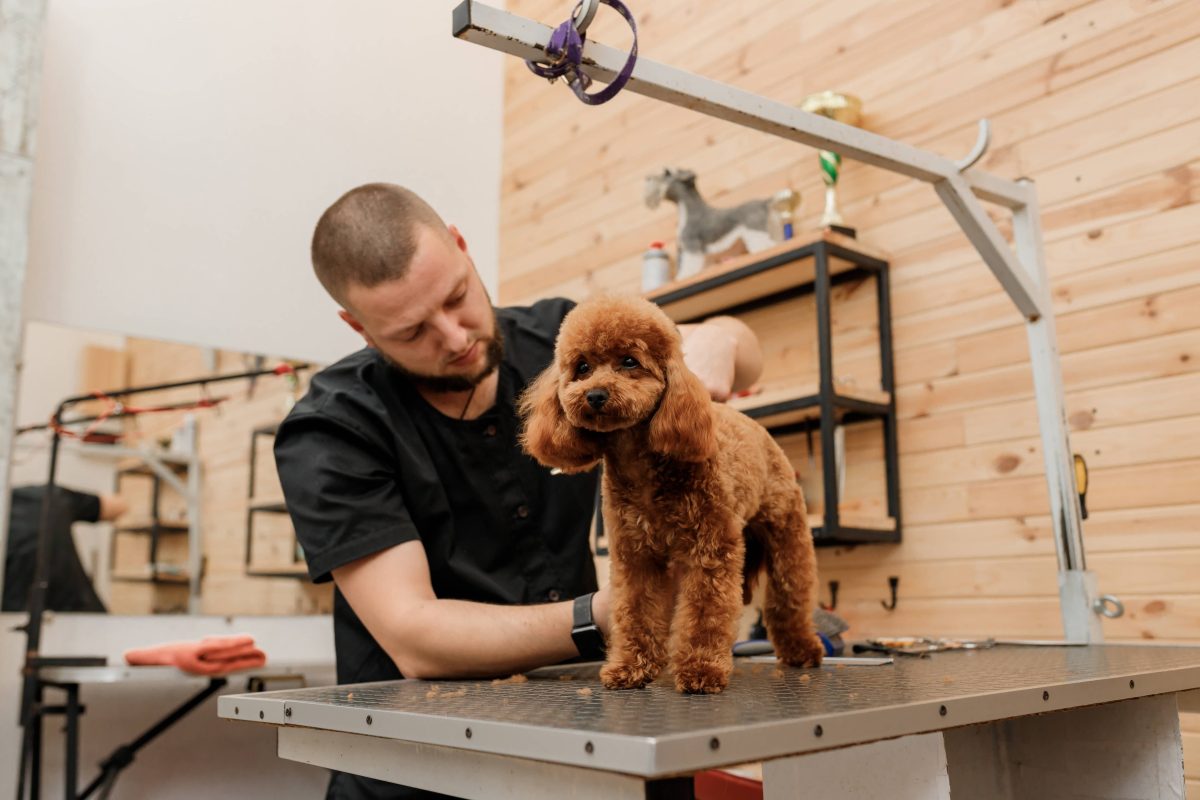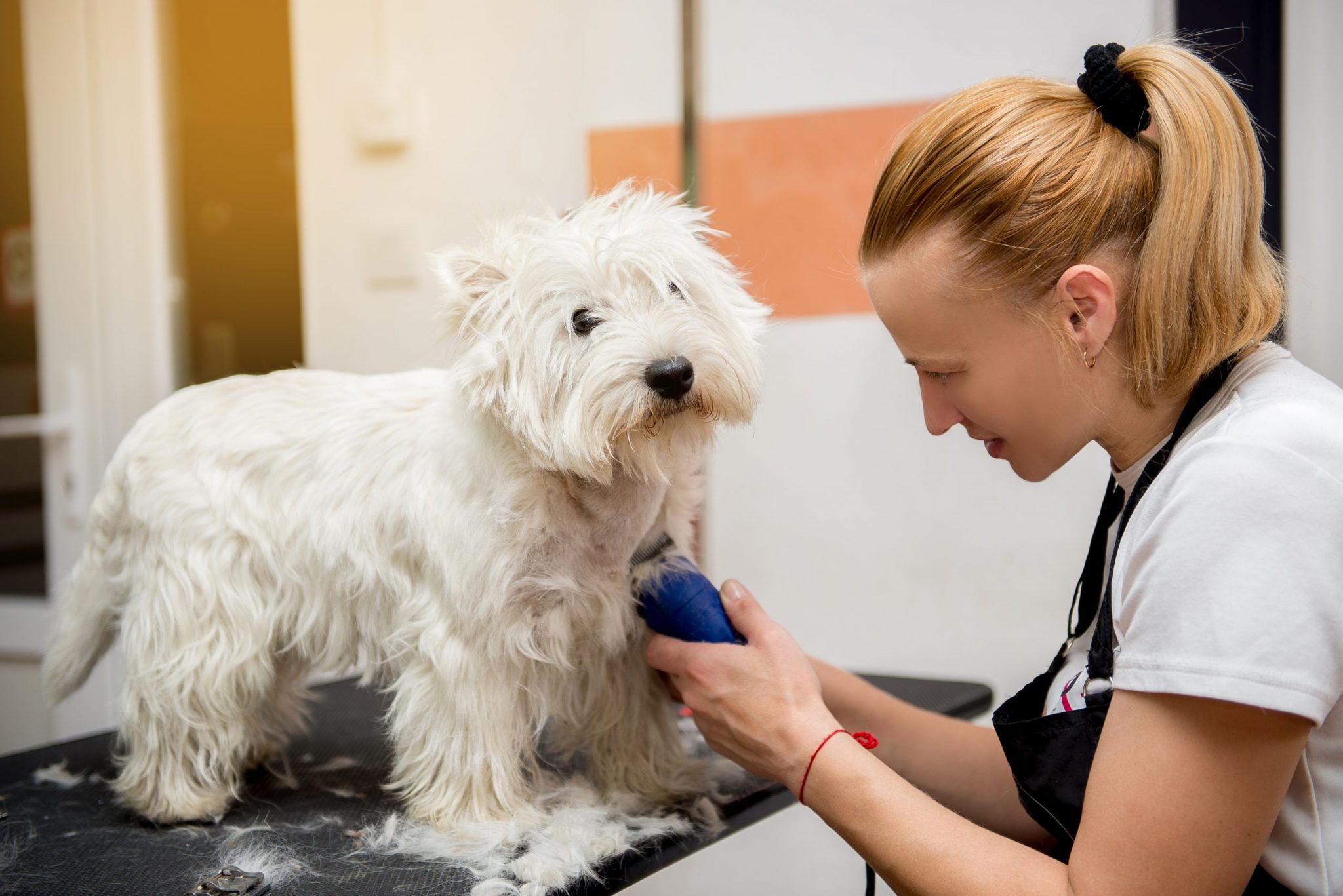We can all benefit from a spa day – and so can our pups!
Whether you’re pampering your dog at home or taking them to a professional salon, regular grooming is essential for helping them look dapper, stay healthy, and feel their best.
Of course, if you have an anxious dog, tasks like bathing and nail trimming can sound… stressful, to say the least.
According to Pet Evolution, around 70% of dogs deal with anxiety, and dog grooming is certainly a big stressor for many. If you’re dealing with a fearful pup, know you’re far from alone.
Whether your pet gets overstimulated by your blow dryer or freaks out when someone brings a shampoo bottle over, there are strategies dog owners can employ to reduce stress and make grooming more enjoyable.
But first, let’s talk a little bit about how and why anxiety tends to manifest in our dogs.
Understanding Anxiety in Dogs
Just as it does in humans, anxiety in dogs can manifest in many different ways. Some dogs might express theirs vocally by whimpering, barking, or crying. Others might avoid you, behave aggressively, or tremble uncontrollably.
Your pet’s source of grooming anxiety might not immediately be clear. It’s possible they had a past traumatic experience, get overwhelmed by the unfamiliar scents and sensations, or are simply uncomfortable or in pain.
If you notice unusual body language or vocalisation when attempting to groom your dog, take note and pause. It’s important to address anxiety upfront – otherwise, you risk adding to their trauma and exacerbating the problem.
(1) Create a Calm Environment
Altering your dog grooming environment can work wonders in helping your furry friend feel relaxed and comfortable. Here are some tips for setting up a grooming area that promotes relaxation:
Choose a Quiet Space
Pick a quiet room where you can bathe and tend to your dog without distractions or loud noises. Avoid areas with high foot traffic or other pets, as these can cause additional stress.
Minimise Distractions
Keep your grooming area free from clutter and things that might wind your dog up. Put away toys, food bowls, and anything else that might catch their attention and distract them from grooming sessions.
Provide Comfortable Seating
Whether you’re grooming your dog on a table or the floor, make sure they have a comfortable surface to sit or lie on. Use a non-slip mat or towel to prevent them from slipping or sliding during grooming.
Use Soft Lighting
Bright lights can be harsh and unsettling for some nervous dogs. Opt for soft, natural lighting or use a dimmer switch to adjust the brightness as needed.
Play Calming Music
Soft, soothing music can drown out background noise and create a calming ambiance for your dog. Choose classical music or specially curated playlists designed to reduce anxiety in dogs.
Just recently, Pooch and Mutt played a series of tracks to determine what music best soothes dogs. Their findings indicated that slow, quiet, acoustic songs with minimal vocals are the best for calming anxious dogs. Reggae and hard rock can also be good genres for lowering fast heart rates.
By creating a calm and inviting environment for grooming, you can help your dog feel at ease and make the experience more enjoyable for both of you.
(2) Take Breaks as Needed
If your dog starts to show signs of anxiety or discomfort during grooming, don’t hesitate to take breaks. Offer them water, treats, or a short walk to help them relax before resuming the grooming session.
When you’re stressed out, it helps to take a step away, right? The same concept applies to your pet, so don’t rush through grooming in one sitting if they seem uncomfortable. Taking breaks can make the process more enjoyable for everyone.
(3) Focus on Building Trust and Positive Associations
When getting groomed, your dog needs to feel they can rely on you to protect and care for them. Just as importantly, they need to associate some positive sensations with grooming, whether those be praise, treats, or other rewards.
Use a gentle, reassuring touch to help your dog feel safe and secure during the grooming session. Speak to them in a calm, soothing voice, and avoid sudden movements or actions that might startle them.
Also, do your best to respect their boundaries – just as you would want a doctor or hair stylist to respect yours. Pay attention to your dog’s body language. If they show signs of discomfort or stress, take a step back and give them space to relax before continuing.
The more you can incorporate trust and positive reinforcement into the routine, the quicker they’ll begin to feel comfortable during grooming sessions. But remember: building trust takes time, so be patient and understanding. Avoid rushing or forcing your dog into grooming tasks they’re not ready for, and celebrate small victories along the way.
(4) Gradually Introduce Dog Grooming Tools
Sometimes, tools like shavers, scissors, nail clippers, and blow dryers are the scariest part of getting groomed. If your dog seems uncertain about these kinds of tools, introduce them gradually to lessen their anxiety.
Begin by simply showing your dog the grooming tools without using them. Let them sniff and investigate at their own pace, rewarding calm behavior with treats and praise.
Once your dog is comfortable with the sight and smell of the tools, start using them in small increments. For example, lightly touch your dog with the brush or clippers for a few seconds, then immediately reward them with a treat and praise. Gradually increase the duration and intensity of the touch as your dog becomes more comfortable.
Throughout the desensitisation process, use plenty of treats and praise to create positive associations with the grooming tools. Each time your dog allows you to touch them with the tools, reward them immediately with a treat and verbal praise. This helps anxious dogs learn that being groomed is a positive experience.
(5) Know When to Consult With Experts
You can be as gentle, kind, and patient as possible – but in some cases, your pup might require help from someone more experienced and knowledgeable. Both veterinarians and professional dog groomers can be huge assets when handling an anxious pet.
In our experience, it’s time to seek professional help when your nervous dog …
- Consistently displays signs of anxiety during every grooming session, regardless of your efforts.
- Behaves aggressively by growling, snapping, biting, or scratching.
- Has physical or medical issues that make grooming difficult or painful.
- Is anxious enough that you’re concerned for their safety.
In these cases, it’s typically best to seek guidance from a professional dog groomer or allow them to handle the grooming process completely.
Need Help? Book an Appointment at Our Northwich Grooming Salon
We believe in all of the tips we shared above, but we also know firsthand how challenging the grooming process can be with an anxious dog.
Fortunately, the entire Paw Pad team is trained to work with pets of all comfort levels – and we’re confident we can turn dog grooming into an enjoyable experience for your furry friend.
Let us know if you’re struggling with dog grooming anxiety. We’ll arrange a calming, careful grooming appointment that will keep your pet safe, clean, and happy.




